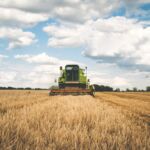Compound feed is a nutritionally balanced feed that is formulated based on the physiology, growth stage, and production requirements of animals in addition to feeding evaluation experiments. Following the scientific formula, feeds from various sources are mixed uniformly and processed according to standard procedures.
Early in the twentieth century, compound feed began to become available. As a result of increased understanding of domestic livestock amino acid, vitamin, and trace element requirements, antibiotics and sulfonamides were introduced into the feed field as additives in the 1950s. According to the market database, this sparked the development of compound feeds. Initially, the application gained popularity in Europe and America and soon spread to Asia.
In recent years, livestock nutrition has become increasingly important due to the increased number of commercial livestock producing units and the scope to enhance productivity to meet rising livestock demand.
A variety of feed products are currently available on the market to meet the feed requirements of various livestock species. The supply and demand of feedstuffs in a region differ significantly from one that is developing.
According to the market database, compound feed products include cattle, poultry, aqua, swine, and pet food. A rise in pork production is likely to result in a significant market share for swine feed. There are many different types of additives, including amino acids, vitamins, enzymes, feed acidifiers, antioxidants, minerals, yeast, and colorants. In recent years, amino acids held the highest market value in the feed additive industry. In terms of market revenue, vitamins are second to amino types. The compound feed market will continue this trend shortly, with amino acids growing at the highest rate, followed by vitamins.
Register now to get free 10 year market forecast of compound feed market research report
The market database states that a substantial share of the market is likely to come from the Asia Pacific and Europe over the next couple of years.
Lupin for compound feed in EU
In Europe and many other regions, soy meal is the most common protein component in compound feed for pigs, poultry, and dairy cattle. A variety of crops can serve as substitutes, despite the high price of soybeans and the subsequent sustainability concerns for some soybean-producing regions.
Greek researchers note that lupin may provide a sustainable alternative protein source in the feed industry based on animal feed. Many parts of the world have grown lupins (a pulse crop) for livestock and food for centuries, mainly in the Mediterranean and parts of South America.
In almost all cases, lupin serves as a feed. According to Dr. Steve Little in a 2021 report for the Australian Export Grains Innovation Centre, lupins have proved effective for centuries as weed and pest control and as a means of improving soil fertility and crop yields due to their nitrogen-fixing abilities. Around 72% of the lupins are grown in Western Australia. Lupin is also grown on a large scale in Eastern Europe, the Mediterranean, probably in Russia (tough to confirm), Chile, and Canada.
In addition to dairy cattle, lupin is used for beef and pigs as well. It has been used there for years as livestock feed. Farmers with small cattle feedlots and dairy farms often plant lupin in their fields. Additionally, lupins can help to supplement sheep pastures.
NUQO’s New Technology
According to the market database, NUQO, a French-based feed additives manufacturer, has developed technology to maintain monogastric performance during a health challenge. It employs a double encapsulation approach.
A combination of phylogenies and psychogenic comhttps://globalmarketdatabase.com/compound-feed-market/ponents appears in this technology, enhancing gut health, digestion, immunity, and immunity against disease. The company claims that the double encapsulation method provides an accurate and precise controlled release of its ingredients. In this method, active ingredients are released sequentially or fractionally from the duodenum up to the colon, based on the sequential or fractionated release of the different components is released on demand to enhance digestion and control gut flora.
It has three main goals: Ensure pathogen control, trigger antioxidant effects, and trigger antioxidant effects. NUQO SAFE has gained widespread acceptance in North America, Europe, Latin America, and Asia. . The Compound Feed market and its 10-year business outlook can be understood using Global Market Database.


